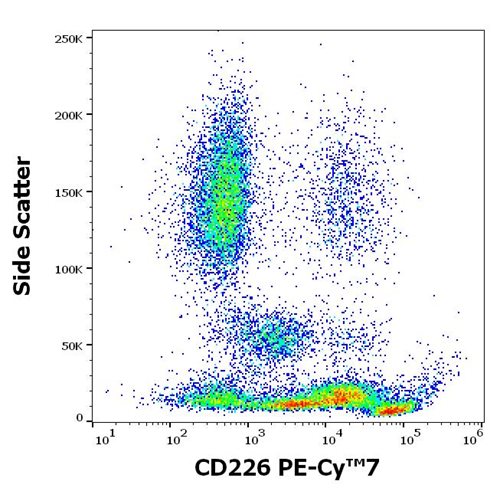Human CLEC4N / CLEC6A / Dectin-2 Recombinant Protein (Fc Tag)(Discontinued)
Shipping Info:
For estimated delivery dates, please contact us at [email protected]
| Amount : | 100 µg |
| Purification : | > 80 % as determined by SDS-PAGE |
| Content : | Formulation Lyophilized from sterile PBS, pH 7.4 Normally 5 % - 8 % trehalose, mannitol and 0.01% Tween80 are added as protectants before lyophilization. |
| Storage condition : | Store it under sterile conditions at -20°C to -80°C. It is recommended that the protein be aliquoted for optimal storage. Avoid repeated freeze-thaw cycles. |
| AA sequence : | Thr42-Leu209 |
| Alternative Name : | CLEC4N Protein, CLEC6A Protein, CLECSF10 Protein, DECTIN2 Protein, |
Source : HEK293 Cells
C-type lectin domain family 4 member N (CLEC4N), also known as Dectin-2, is a C-type lectin expressed by dendritic cells (DCs) and macrophages. Members of the C-type lectin domain (CTLD) superfamily are metazoan proteins functionally important in glycoprotein metabolism, mechanisms of multicellular integration and immunity. They share a common fold and are involved in a variety of functions, such as generalized defense mechanisms against foreign agents, discrimination between healthy and pathogen-infected cells, and endocytosis and blood coagulation. Genome-level studies on human, elegans and melanogaster demonstrated almost complete divergence among invertebrate and mammalian families of CTLD-containing proteins (CTLDcps). The vertebrate CTLDcp family was essentially formed early in vertebrate evolution and is completely different from the invertebrate families. The composition of the CTLDcp superfamily in fish and mammals suggests that large scale duplication events played an important role in the evolution of vertebrates. Dectin-2 is important in host defense against C. albicans by inducing Th17 cell differentiation. Dectin-2 constitutes a major fungal pattern recognition receptor (PRR) that can couple to the Syk-CARD9 innate signaling pathway to activate DCs and regulate adaptive immune responses to fungal infection.
Endotoxin :< 1.0 EU per µg of the protein as determined by the LAL method
For Research Use Only. Not for use in diagnostic/therapeutics procedures.
|
There are currently no product reviews
|


















.png)









